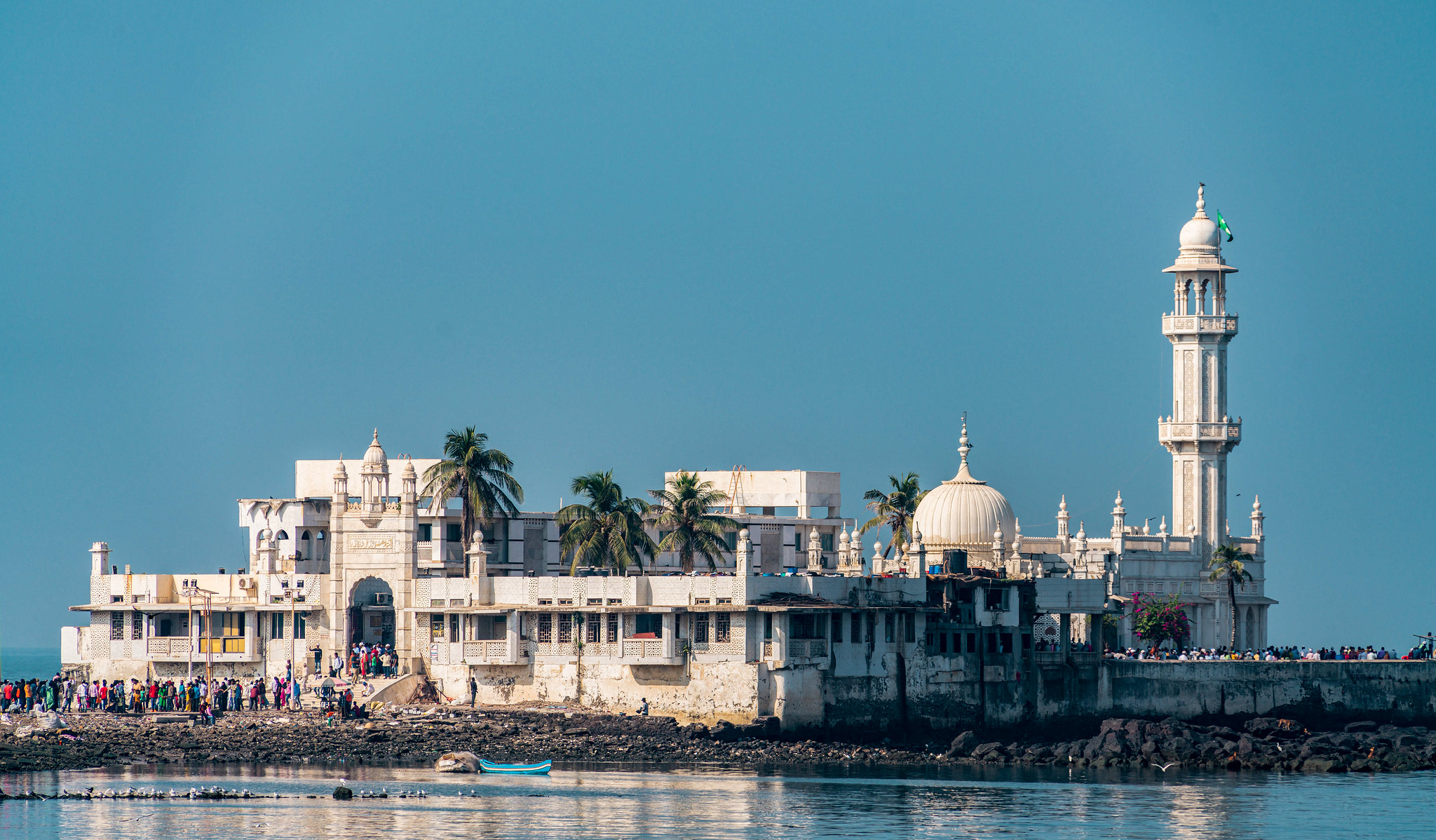Nestled in the heart of Mumbai, the Haji Ali Dargah stands as a testament to the city’s rich cultural heritage and architectural prowess. This iconic structure, seemingly floating on the Arabian Sea, has captivated visitors for centuries with its stunning design and intricate details. As you approach the dargah, you can’t help but be mesmerized by its gleaming white facade, which stands in stark contrast to the azure waters surrounding it.
The dargah’s most striking feature is undoubtedly its location. Connected to the mainland by a narrow causeway that disappears during high tide, the shrine appears to be suspended between land and sea. This unique positioning not only adds to its mystical allure but also serves as a reminder of the structure’s resilience against the elements.
As you make your way along the causeway, you’ll notice the dargah’s impressive Indo-Islamic architecture coming into focus. The main building is a perfect example of the Mughal style, with its elegant domes, minarets, and arches. The central dome, adorned with intricate mirror work, is particularly eye-catching. It’s not uncommon to see visitors craning their necks to admire the detailed patterns and designs that cover every inch of the structure.
Upon entering the dargah, you’ll be greeted by a spacious courtyard that serves as a gathering place for devotees and tourists alike. The marble floors, polished to a mirror-like sheen, reflect the sunlight and create a sense of openness and tranquility. Surrounding the courtyard are intricately carved marble pillars, each one a work of art in its own right.
One of the most remarkable aspects of the Haji Ali Dargah is its exquisite marble work. From the moment you step inside, you’ll be surrounded by stunning examples of this craftsmanship. The walls are adorned with delicate floral patterns and calligraphy, all painstakingly carved into the marble. These intricate designs not only serve as decoration but also tell the story of the dargah’s history and significance.
The centerpiece of the dargah is, of course, the tomb of Pir Haji Ali Shah Bukhari. Housed within a separate chamber, the tomb is covered in an ornate silver frame and surrounded by marble screens. The level of detail in this area is truly awe-inspiring, with every surface featuring some form of decoration or embellishment.
Another architectural marvel of the Haji Ali Dargah is its use of light and space. The structure is designed in such a way that natural light floods the interior, creating a warm and inviting atmosphere. Large windows and strategically placed openings allow for excellent ventilation, keeping the interior cool even on the hottest Mumbai days.
As you explore the dargah, you’ll also notice the beautiful stained glass windows that adorn various parts of the building. These colorful works of art not only add to the aesthetic appeal but also create a mesmerizing play of light and shadow throughout the day.
The Haji Ali Dargah is more than just a religious shrine; it’s a masterpiece of architectural design and craftsmanship. From its unique location to its intricate marble work and clever use of light and space, every aspect of the structure has been carefully considered and executed. As you leave the dargah, you can’t help but feel a sense of wonder at the skill and dedication that went into creating this enduring symbol of Mumbai’s cultural heritage. Whether you’re a architecture enthusiast, a history buff, or simply someone who appreciates beauty, the Haji Ali Dargah is sure to leave a lasting impression.
Haji Ali Dargah stands as a testament to Mumbai’s rich cultural heritage and religious diversity. This iconic mosque and tomb, situated on an islet off the coast of Worli, attracts millions of visitors annually. Its Indo-Islamic architecture, intricate marble work, and spiritual significance make it a symbol of unity and faith. The dargah’s unique location, accessible only during low tide, adds to its mystique and allure. As a place of worship, historical landmark, and architectural marvel, Haji Ali Dargah continues to be an integral part of Mumbai’s identity and a source of inspiration for devotees and tourists alike.

